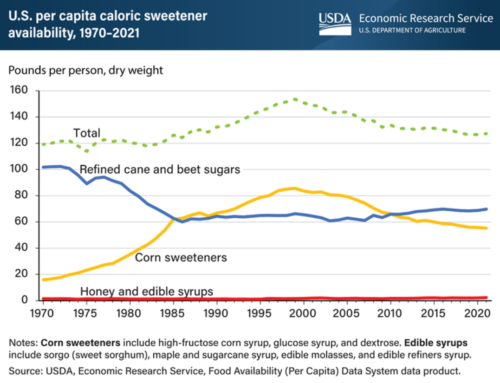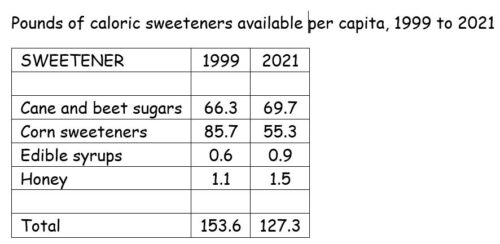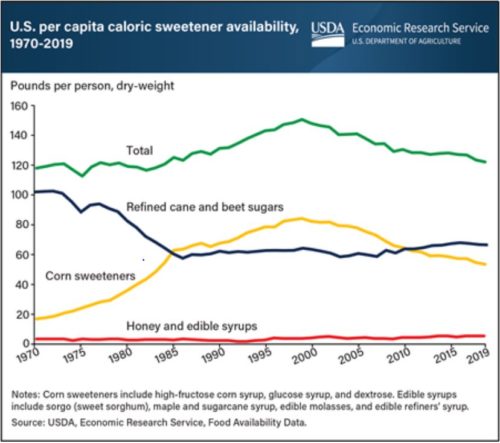FDA says HFCS is HFCS; it is not corn sugar
Cheers to the FDA. It just said a firm no to the Corn Refiners’ petition to be allowed to call High Fructose Corn Syrup (HFCS) “corn sugar.”
The FDA’ s rationale:
- Sugar is solid, dried, and crystallized. Syrup is liquid. HFCS is liquid. Therefore, it is syrup, not sugar.
- Corn sugar already has a regulatory definition: dextrose (glucose). HFCS contains fructose as well as glucose. Therefore, it is not corn sugar.
As I mentioned earlier, I filed comments to the FDA on the Corn Refiners’ petition:
The [Corn Refiners’] website quotes comments I have made to the effect that HFCS is biochemically equivalent to sucrose. It is. But I do not believe that biochemical equivalence is a good reason for the FDA to agree to a name change at this point.
It is highly unlikely that public misunderstanding of nutritional biochemistry and the differential physiological effects of glucose vs. fructose will be addressed and corrected by changing the name of HFCS to corn sugar.
…the name change is not in the public interest. Its only purpose is to further the commercial interests of members of the Corn Refiners, and that is not one the FDA should be concerned about.
I was referring here to the legal and public relations wrangling between the Sugar Association, which represents the growers of cane and beet sugar (sucrose), and the Corn Refiners.
I have complained previously about the in-your-face behavior of the Corn Refiners in attempting to protect its share of the sweetener market: its strange advertisements; its use of my quotes (they told me the quotes are in the public domain and if I don’t like it I can sue them); its aggressive lobbying; its stated intention to use the term “corn sugar” whether the FDA approves it or not.
The Sugar Association’s behavior is not much better. It has taken the Corn Refiners to court over the naming issue.
I was amused to receive two e-mails this week from its public relations firm complaining about the Corn Refiners’ clumsy PR response to a UCLA study ostensibly showing that HFCS makes rats “fat and stupid.” This study, however, did not compare the effects of sucrose and HFCS and its results, even if confirmed, could apply to any source of fructose.
The second e-mail sent links to the FDA’s decision and the Sugar Association’s response.
The FDA’s ruling represents a victory for American consumers,” said Dan Callister, an attorney for the plaintiffs in the ongoing litigation. “It reaffirms what most consumer advocates, health experts and policy officials have been saying all along: only sugar is sugar. HFCS is not sugar. The next step is for the federal court to end the CRA’s misleading propaganda campaign.
Sugars, plural, are sugars. Sucrose is glucose and fructose. So is HFCS.
Everyone would be better off eating a lot less of both.
And that brings me to New York City Mayor Michael Bloomberg’s latest attempt to promote the health of his constituents: banning any sugary drink larger than 16 ounces from restaurants, movie theaters, and street carts.
I can’t wait to see how the Beverage Association deals with this one.
Addition June 1: Rosie Mestel of the L.A. Times has an excellent account of this in which she quotes from these comments. Her story is accompanied by a PR photo from the Corn Refiners Association. What are these people thinking?





